How to fertilize your marijuana plants? Types of nutrients / Types of fertilizers and additives (according to their origin/according to their function ) / Other additives or nutritional supplements.

We understand fertilizing or fertilizing as the action of providing nutrients to plants in order to offer them the food they need to carry out each of their processes with optimal results.
Marijuana plants absorb nutrients mainly by the roots, but also has the ability to absorb nutrients through the cuticle and stomata of the leaves, but in less quantity than they would.
HOW TO FEED YOUR MARIJUANA PLANTS:
There are three different ways to fertilize your marijuana plants:
- Use fertilizers or liquid additives mixed in the irrigation water.
- Use fertilizers or powder additives mixed or sprinkled on the substrate.
- Use fertilizers or liquid additives dissolved in water and applied by spraying the leaves (foliar fertilization).
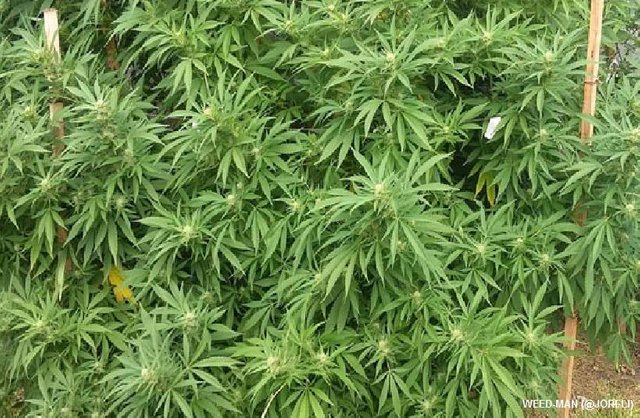
It is better to use fertilizer powder for crops in the garden
Types of nutrients:
Cannabis plants need macronutrients and micronutrients to ensure optimal development throughout the crop.
Macronutrients are the major components of plants and can be measured in percent (%) and micronutrients that are involved in smaller amounts but are essential in metabolic functions (enzymes, vitamins and other additives) that are measured in part per million (ppm).
The nutrients can be classified as follows:
Primary macronutrients: Carbon C, Oxygen, Hydrogen H, Nitrogen N, Phosphor P, Potassium K.
Secondary macronutrients: Calcium Ca, Magnesium Mg, Sulfur S.
Micronutrients: Fe Iron, Cu Copper, Mn Manganese, Zn Zinc, Mo Molybdenum, B Boron, Cl Cl, Silicon Si, and Na Sodium.
These nutrients must be applied in appropriate proportions (N-P-K ratio) according to the need of the plant, which changes in need according to the period in which it is found (rooting, growth stage or flowering stage).
In addition, depending on other factors such as the state of the substrate, the size of the flowerpot, the conditions of the root system or environmental conditions, you must pay more or less.
Types of fertilizers and additives for plants:
The nutrients for plants can be classified mainly according to their origin (composition) and their use (according to the need of the plants in each stage).
The origin of the nutrients and their composition also indicate whether they are easily absorbed by the plants or are slower to transform.
Plants have no stomach like animals, so they depend on microorganisms such as fungi and bacteria to break down organic matter and make it easily absorbed by the roots. This occurs, for example, in organic powder fertilizers.
In general terms, marijuana plants absorb mineral fertilizers more quickly than organic fertilizers, although most organic fertilizers in liquid format are "pre-digested", that is, mixed in tanks with beneficial bacteria and oxygen to decompose. organic products and be easier to absorb. There are also some that appear filtered, such as the Botanicare nutrients, which are presented in a very pure organic format and easily absorbed by having been filtered 20 times; the final product is not altered as easily as an unfiltered fertilizer.
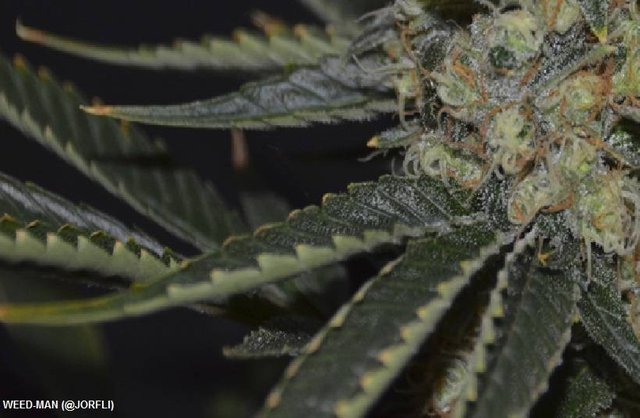
Marijuana plant with over fertilization
Types of fertilizers and additives according to their origin (composition):
1- Fertilizers and organic additives (biological):
Organic fertilizers and additives contain elements from natural sources such as vegetables, algae, guanos or others. They usually provide a greater variety of nutrients and compounds, which translates into odors and flavors of the intense and original harvests of each variety.
Combined correctly, they can offer high yields as well as mineral fertilizers with superior organoleptic qualities.
They are absorbed more slowly than minerals, so they are easy to use and it will be more difficult for you to fertilize the plants.
Root washing is easier with organic nutrients, plants will metabolize nutrients quickly.
They are respectful with the environment.
2- Fertilizers and mineral additives (chemicals):
Mineral fertilizers and additives do not start from natural elements such as biological ones, but plants assimilate them faster than organic nutrients. When absorbed easily, plants show advances more quickly, so it is easier to obtain high yields, but it is also easier to fertilize your plants.
That is also why we must be meticulous in the frequency and dosage of this type of nutrients and observe the appearance of our plants to avoid root blockages. It is highly recommended the use of enzymes during cultivation and cleaners at the end of flowering to facilitate the process of washing roots and avoid a bad taste of the buds.
Mineral products tend to be more economical and biological products are concentrated.
3- Fertilizers and bio-mineral additives (organic-mineral):
Mineral fertilizers and additives are usually composed of an organic base and mineral nutrients, which makes them easily absorbed by plants.
The cultivation of marijuana with this type of nutrients provides the plants with complete nutrition for a guaranteed development, an abundant and quality production.
They are easier to use than minerals, because they do not create unwanted salts so easily.
If you do a good washing of roots to your plants about 10 days before the harvest you will get a marijuana with intense flavors and aromas like that obtained with organic fertilizers, in the balance you will find perfection.
They tend to be very concentrated, so you have to be attentive to the dosage indicated by the manufacturer.
Depending on the stage in which your plants are located, you will have to use different types of fertilizers and additives.
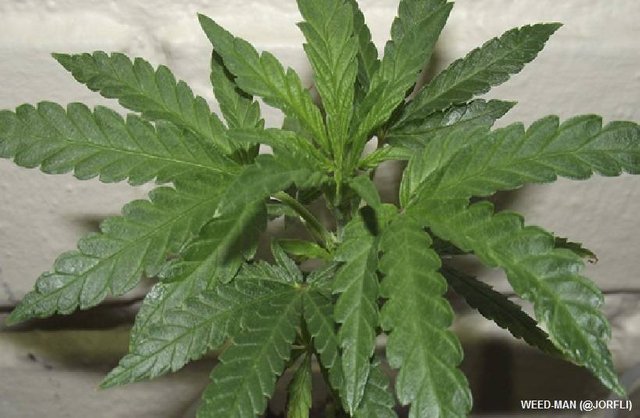
Marijuana plant with the principle of over fertilization
Types of fertilizers and additives according to their function:
1- Root stimulants:
The products for rooting or rooting are fertilizers with high content of phyto-hormones, mainly auxins, which act as chemical signals that tell the cells to specialize. The contribution of these phyto-hormones (natural hormones produced by plants) is not essential as the plants synthesize them, but they favor and accelerate the growth of the root system and therefore the amount of nutrients that marijuana can absorb and transform in new tissues.
It is highly recommended to use a root stimulant since you plant your germinated seeds or cuttings (clones), during the first weeks of growth, each time you transplant and in maintenance of mother plants.
Among the most used and demanded roots stimulants by our clients are the famous Rhizothonic de Canna, the concentrate Rhizo Blast de Botanicare, the effective Hesi Radicular Complex or the economical Rootfast.
Mycorrhizae and trichodermas are not fertilizers or stimulants, but they are beneficial microorganisms that favor the creation and protection of the roots. If you are going to provide organic nutrition to your plants, we recommend using mycorrhizae and trichodermas to favor the root system (if you grow with mineral nutrition they will not be as effective, since the mineral fertilizers eliminate the strains of mycorrhiza and trochoderma).
2- Growth fertilizers (fertilizers):
Cannabis plants, during the growth stage, mainly need nitrogen, phosphorus and potassium (NPK). The fertilizers of growth contain nitrogen in major proportion that phosphorus and potassium, since the nitrogen is the element more used by the plants at the time of creating new stems, buds and leaves, in addition to increasing the levels of chlorophyll and with it improving the Aspect general of the plant.
Nitrogen (N), usually present in fertilizers in the form of nitrate (NO-3) and ammonium (NH + 4. Given its abundance in marijuana plants, is the most important element during this period, since it is part of the structure of the plant (amino acids, proteins ...) that form its tissues (roots, branches, leaves ...) and basic metabolic functions.
Phosphorus (P), normally present in phosphorus oxide, also forms part of the structure of plants such as roots and pistils, in addition to intervening in important metabolic functions such as the transformation of sugars.
Potassium (K) normally presented in the form of potassium oxide, intervenes in very important metabolic functions such as photosynthesis, the opening and closing of stomata, etc.
You should take into account the type of substrate you will use to start fertilizing your plants. If you use an inert substrate such as coconut, you will have to pay from the beginning, otherwise your plants will not have any nutrient to feed on. If you use land already fertilized, you should take into account the approximate time that nutrients will remain in the substrate, for example light soils such as Light Mix of Biobizz contain about two weeks of nutrients, soils like Grow Mix contain about four weeks of nutrients and Highly fertilized lands such as Kilomix or All Mix contain up to 6 weeks of nutrients. This means that during the period in which the soil contains nutrients you should not use growth fertilizer, only root stimulants.
Among the most used and demanded growth fertilizers by La Huerta Grow Shop customers are BioBizz Organic Bio Grow, Botanicare's effective Pure Blend Pro Grow organic fertilizer or Terra Vega de Canna mineral fertilizer. In outdoor crops, some of the most demanded are the complete Growilla Veg de Botanicare or the economical and effective Flortis Eco Guano.
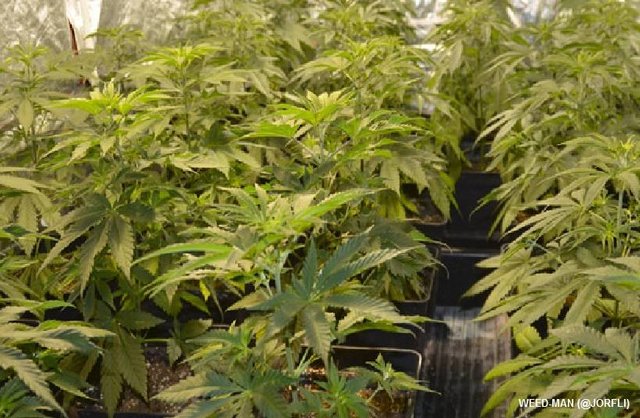
Marijuana plants growing
4- Stimulants, boosters or accelerators of metabolism:
Marijuana plants absorb nutrients mainly by the roots and transform them according to the use they give to each of them, thus covering each of their needs. The stimulants or boosters are composed mainly of humic and fulvic substances that facilitate the absorption and transport of nutrients by the cells of plants. They also contain vitamins and amino acids, which are key in the formation of new tissues.
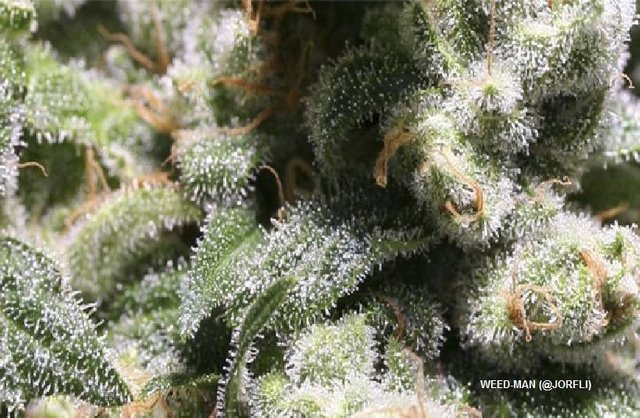
Very resinous marijuana or with high level of cannabinoids
If your plants are in the growth phase, in addition to the growth fertilizer that you should use as basic nutrition, you can also use a growth stimulant such as Alga a Mic from BioBizz or Green Explosion from Top Crop or use a metabolism accelerator such as Liquid Karma de Botanicare to take full advantage of the nutrients provided and provide an extra energy to the plants that will result in faster, robust and healthier growth, as well as greater resistance to adverse situations. Most growth stimulants can be used from the beginning of the crop until the change of flowering or the second week of flowering (respecting the frequency and dosage indicated by the manufacturer in addition to the appearance of the plants).
If your plants are going to start the flowering phase it is also highly recommended to use a flowering stimulant or metabolism accelerator, to favor the plants to create new buds and cannabinoids. Among the most used by our customers are the famous Delta 9 that significantly increases the production of resin and buds, Canna's Bio Boost of totally organic composition, the efficient Big One of Top Crop or the powerful Boost Accelerator. In general terms, flowering stimulants are used throughout the flowering period (respecting the frequency and proportion indicated by the manufacturer and observing the behavior of the plants).
5- PK or fattening of the head:
Marijuana demands large amounts of phosphorus and potassium during flowering, especially from the 3rd to 4th week of flowering, with the aim of creating new flowers. That is why, in addition to having to use a flowering fertilizer to feed your plants, if you provide extra phosphorus and potassium, it will increase the production and weight of the buds.
You always have to be careful when using this type of products, because you have to take into account that you already provide phosphorus and potassium in the base nutrition and if you exceed you can block the roots of your plants and create shortcomings of other types as adverse reactions as the creation of new flowers at the time of maturation.
There are different fattening of the buds with different concentrations of phosphorus and potassium, the most known PK 13-14. Below these concentrations are organic PK as the concentrate Bio Bloomastic de Atami and above the concentration 13-14 we find a great diversity of PK Minerals, among the most used by our customers are the Bloombastic, Blossom Builder. For orchard crops, where it is better to use powdered nutrients that cover more surface, you can use the powerful Blossom Blaster or Monster Bloom
6- Enzymes:
Enzymes are compounds that favor certain biochemical reactions such as the creation of citric acid.

Marijuana deficiencies caused by root blockage
Using enzymes in marijuana crops helps to break down organic matter such as dead roots and to break down the unwanted salts that are generated and accumulated in the substrate and roots, thus maintaining the balance in the substrate and improving the absorption of nutrients.
It is highly recommended the use of enzymes throughout the crop, especially during flowering and in crops with high nutrition or using tap water. We always recommend using osmotized water or with low concentration of salts.
There are many brands of enzymes, among the best sellers for their good price / quality ratio are Cannazym, Atazyme and PowerZyme.
7- Other additives or nutritional supplements for marijuana:
In addition to all the nutrients mentioned above, plants sometimes also need some additives or nutritional supplements to cover all the needs of the plants at all times and obtain the quality of marijuana you want.
There are different types of additives, from carbohydrates and sugars to increase the density and weight of buds such as Bud Candy from Advanced Nutrients, enhancers of terpenes (aromas) such as Sweet Raw from Botanicare or Flavor from Atami, as well as complements used by growers advanced as Mineral Magic, which provides numerous nutrients and protection to the roots, Silica Blast, which increases the cell walls and provides extra protection to the plant or Vitamin, which helps to withstand the excesses of heat.
In addition, there are mononutrients to meet specific needs, such as nitrogen, magnesium, calcium or phosphorus and avoid deficiencies at any time during the crop.
